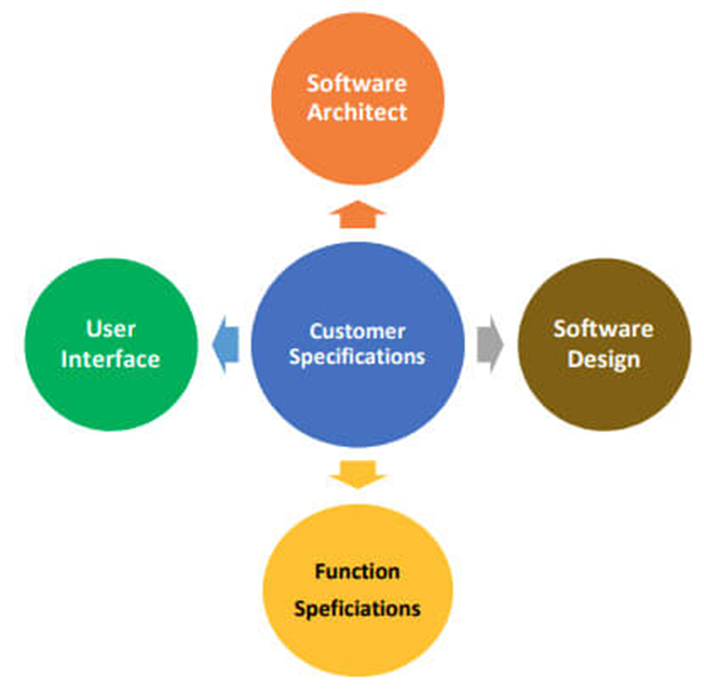What happens in requirement analysis phase in SDLC?
For any software development life cycle (SDLC), the requirement phase is the first step toward unambiguity. It is an essential step because it reverberates with acceptance tests which are crucial for the end user acceptance. Here is the complete process of the requirement analysis and gathering phase of SDLC –
Requirement gathering
Also known as elicitation, software development
requirements gathering is followed by an analysis of the needs so that the
technology experts shall go for feasibility tests and may alter some objectives
to convert the thoughts into a real product.
The gathering technique involves precise
research on what customers need. Nevertheless, it is not possible to put a
survey questionnaire to each customer and get feedback; hence, the requirement
for product, tool, or objectives is asked to the stakeholders who influence the
product or who are well acquainted with the end users.
The stakeholders could be software quality
engineers or at times even the third-party agencies or vendors who help you
build the project requirements. In addition, you can also involve software
developers or programmers and project managers with vast experience with a
similar product.
Alternatively, some enterprises with a better
budget may also opt for hiring domain experts from a particular industry in
which the software product is going to be built. And for that having knowledge
about software development would be
beneficial.
Another good software development methodology to
gather requirements for the software development life cycle is to take valid
and tangible references from the use cases. However, it is important to note
that use cases may not give you an idea about how software shall work on user
input; instead, it just shows you what’s expected of user inputs.
On the other hand, many experts opine that
adding security tasks during the requirement phase is fruitful rather than
depending on insecure code from the software that is already developed.
Analysis of requirement gathering
Once the requirement gathering for the software
development life cycle is completed, the team members and other associates
perform brainstorming so that the feasibility study and course of action can be
performed. All the issues and ambiguities are cleared by experts to make the
analysis thorough. The analysis phase holds its own importance in the
requirement phase of SDLC due to following reasons –
- Customers’ views are possible to consider
and review
- The buyers’ view on customers’ feedback
could be different; the software developer programmers can evaluate it
further to make it technically possible
- The analysis in the early stage shall help
everyone involved in SDLC have a clear idea about how the product will
take shape
- Clarity is the key to success – with this
analysis, all are on the same board
Analysis documentation
What is analyzed should be documented in an
unambiguous way. Several types of requirements are carried out from the SDLC
requirement analysis. Let us see a few of them.
The customer specifications stay in the center
because the rest are subordinates to the main factor.
Customer specifications: Here, the specifications of the end-users or
customers are specified and analyzed. It is important to get along with each
need and make the stakeholders understand the importance of customer feedback
in thriving the business.
Software architecture: The requirement of software architecture in the steps of SDLC includes
mentioning various layers of application services along with operating systems
and entire architectural infrastructure.
Software design: The design phases of SDLC shall mention
every component that majorly affects the overall software design in terms of
the user interface. The design shall mention UI and its impact on UX (User
Experience). The design is carefully studied and finalized because it is the
one that shall carry the product’s success.
Function requirement: Directly derived from the customer’s feedback or
specifications, the functional requirements give the stakeholders a clear view
and idea about how functions shall drive the software further in the use.
User interface: This specific requirement outlines the user
interface which is the face of the software tool. Such requirements are
recorded in the software development requirements management tools. You may
take a readymade professional tool (as offered by IBM) or alternatively can
develop your own customized tool to save money.
Converting business objectives into software
features
The business requirements are typically
customer-centric i.e., what target customers want. They are commercially driven
goals where enterprises focus completely on growing their business through high
customer satisfying features and rewards.
Nevertheless, when business requirements are to
be converted into software requirements, there is a technical barrier, or what
we can say is technical limitations. Hence, the business objectives are broken
down into various components and their technical specifications and approach is
thought out thoroughly. This process is carried out by following simple steps –
- Breaking the customer-specific business
objectives into a detailed user story
- Designing a flowchart that shows various
actions required to fulfill the objectives
- Providing technical specifications and
conditions to fulfill each objective or story
- Carrying out wireframes and diagrams to
assure a smooth and unambiguous workflow of various components and
milestones
- Defining and separating the non-functional
requirements from the business specifications or objectives
How should it end?
Software development requirements analysis is
the heart of any SDLC model and therefore, it is important not to miss any
concern or issue raised during the requirement phase building. If you miss it,
it shall cost you an arm and a leg during the development process of software.

Comments
Post a Comment